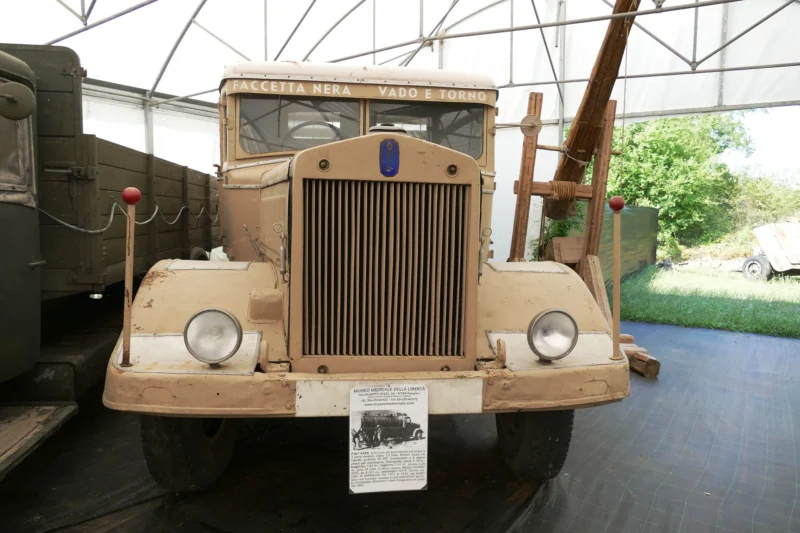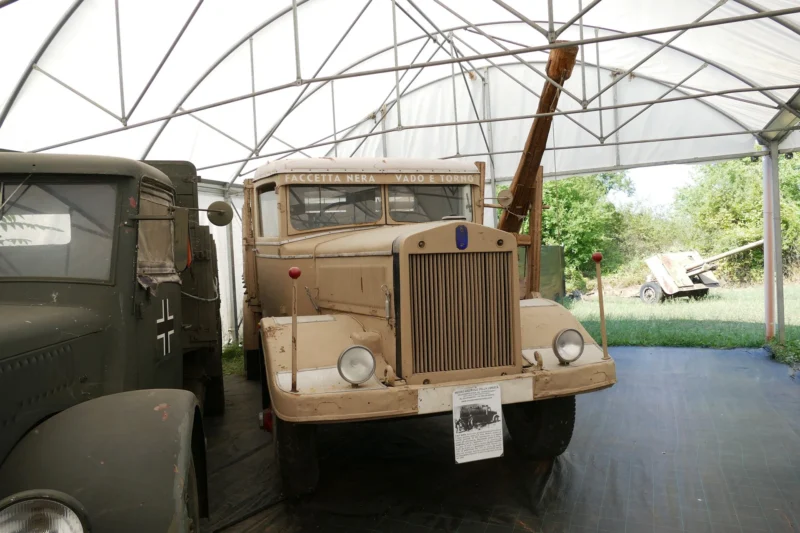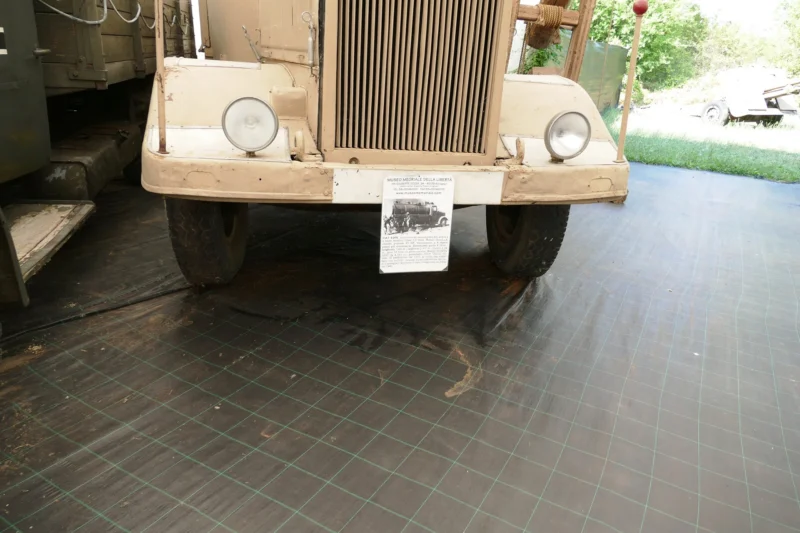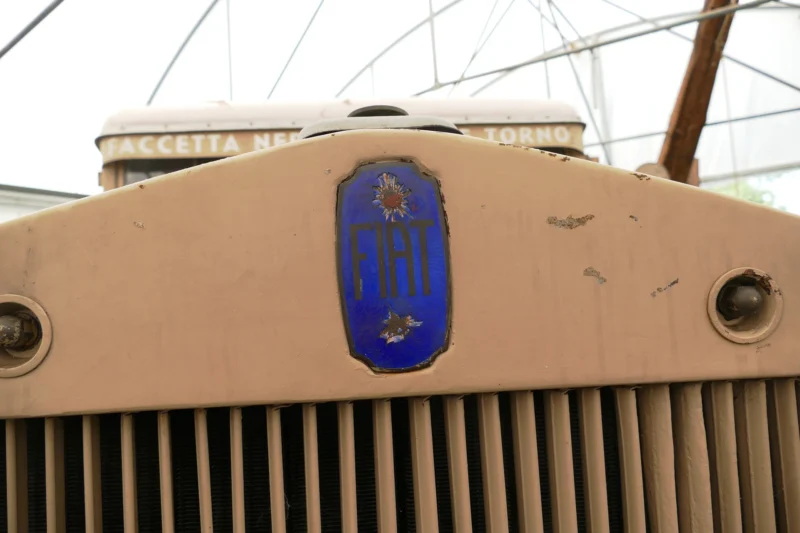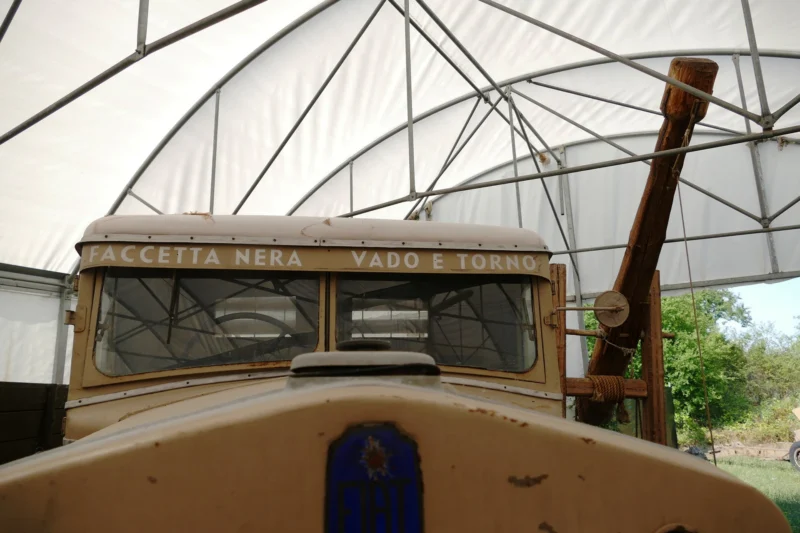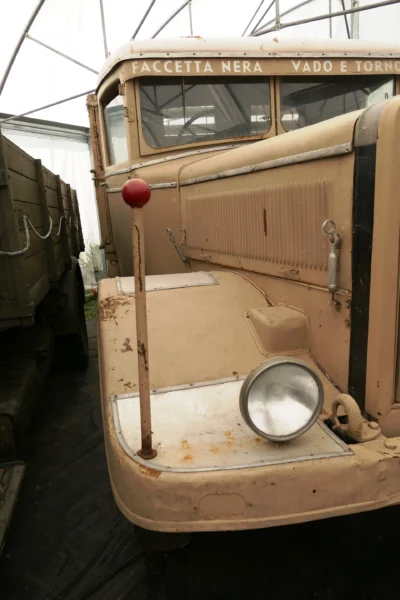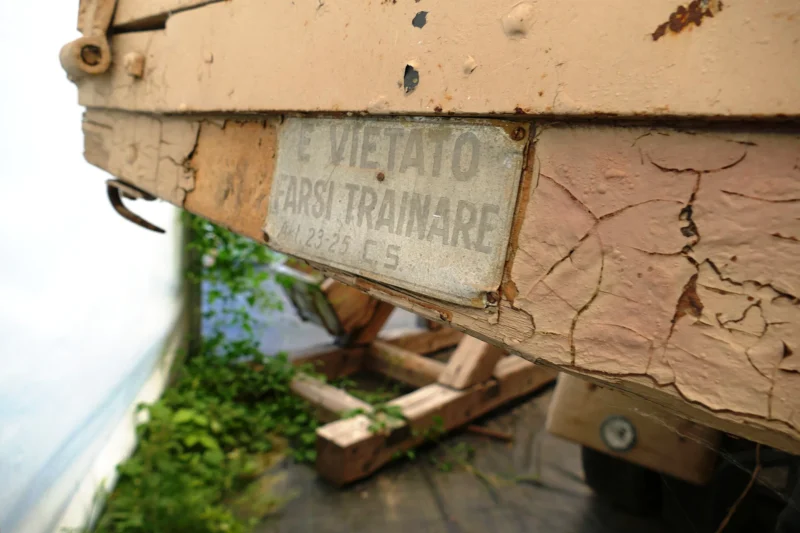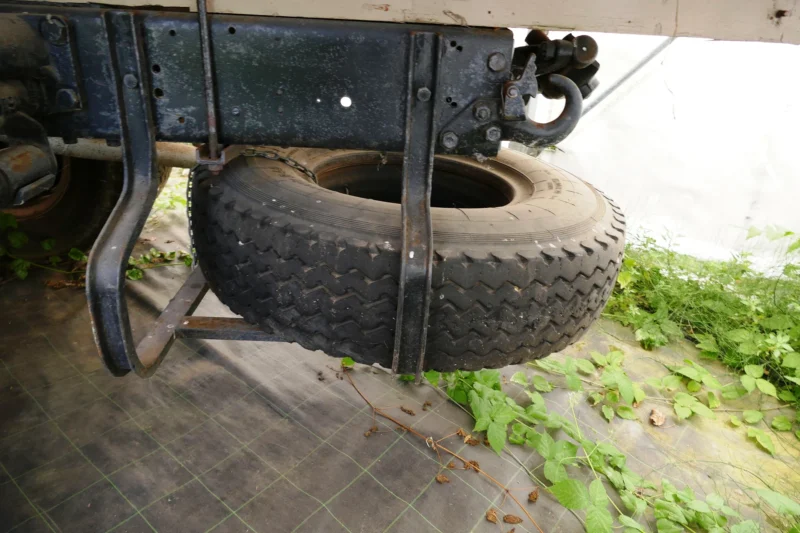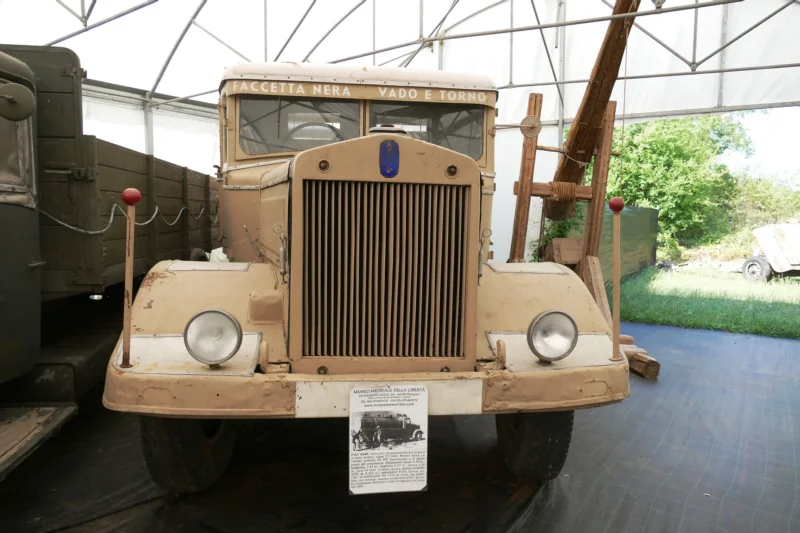
Fiat 634N | |
|---|---|
| Země | Itálie |
| Typ | Heavy truck |
| Výroby | 1931-1939 |
| Postaven | Neznámé |
The FIAT 634N (Nafta/diesel) is the military variant of the civilian FIAT 632 heavy truck manufactured by Italian manufacturer FIAT from 1931 to 1939. It was used by the Regio Esercito units to transport troops or supplies.
Zdroj: Wikipedie
| FIAT 634N Walk Around | |
|---|---|
| Fotograf | Unknow |
| Lokalizace | Neznámé |
| Fotografie | 21 |
Viz také:
The Fiat 634N was a formidable heavy-duty truck produced by the Italian manufacturer Fiat V.I. between 1931 and 1939. Nicknamed “Elefante” (Elephant) for its robust construction, power, and significant load capacity, it played a crucial role in both civilian transport and military logistics during its operational lifespan, particularly for the Italian Royal Army (Regio Esercito) and later the German Luftwaffe.
Overview and Significance
- Pioneer of Diesel: The 634N was one of the first heavy trucks in Europe to be equipped with a diesel engine, marking a significant step in the evolution of commercial vehicles. The “N” in its designation stood for “Nafta,” which means diesel in Italian.
- Heavy-Duty Workhorse: It was designed to be a versatile heavy truck, capable of transporting troops, supplies, and acting as a base for various specialized vehicles.
- Built for Durability: Known for its robust and solid construction, the 634N was built to withstand demanding conditions, earning its “Elephant” moniker.
Key Features and Specifications
- Motor:
- Initially, it was powered by the Fiat 355 diesel engine, a 6-cylinder, 8.3-liter (8312 cc) inline unit producing 75 horsepower at 1700 rpm.
- From 1933, it was upgraded to the Fiat 355C engine, a slightly larger 8.4-liter (8355 cc) unit that boosted power to 80 horsepower at 1700 rpm.
- A version propelled by a wood-gas generator (Fiat 634G) was also offered from 1934 to 1939, using a 9.97-liter engine producing 80 hp at 2100 rpm.
- Payload Capacity:
- The first series had a payload capacity of 6.14 tons.
- Starting with the second series in 1933, after strengthening the rear axle, chassis, and leaf springs, its payload increased to 7.64 tons (7,640 kg). It could carry up to almost 10 tonnes of ammunition or provisions, or approximately 40 fully equipped men.
- Dimenze:
- Length: Approximately 7.43 meters (24.39 ft)
- Width: Approximately 2.40 meters (7 ft 10 in)
- Height: Approximately 3.24 meters (10.6 ft)
- Speed: Maximum speed was around 40-45 km/h (25-28 mph).
- Transmission: Typically a 4×2 rear-wheel drive configuration.
- Cab Design:
- Early series had a more basic cabin.
- The later 634N2 version (from 1933) featured a more aerodynamic driver’s cab with rounded shapes, a drop-shaped radiator grille, and an angled windscreen.
- Notably, it was one of the first trucks in Europe to be equipped with bunks for the crew, offering sleeping arrangements for long journeys.
- Towing Capability: The N1 and N2 versions could tow a two-axle trailer, allowing for a combined maximum weight of 24 tonnes, which was substantial for its era. It successfully towed “M” series tanks and self-propelled vehicles during the war.
Variants and Military Use
- Civilian vs. Military: While the 634N served as a robust civilian truck, its “NM” (military) variant was widely adopted. Differences included fixed windows and distinct headlights on military models.
- Specialized Versions: The versatile chassis was adapted into numerous specialized vehicles, including:
- Tankers for fuel or water.
- Mobile workshops.
- Fire trucks.
- Horse carriers for the army.
- Sand trucks.
- Autocannone da 102/35 su FIAT 634N: A notable military adaptation was mounting a 102mm anti-aircraft naval gun on the 634N chassis. These “gun trucks” were used by the Italian Maritime Artillery Militia during World War II, particularly in North Africa, for both anti-aircraft and anti-tank roles.
Dědictví
The Fiat 634N was a cornerstone of Italian heavy transport during the 1930s and into the early years of World War II. Its innovative diesel engine, substantial payload, and adaptable chassis made it a crucial asset. Although eventually superseded by newer designs like the Fiat 666N, its impact on heavy vehicle development in Italy was significant.
